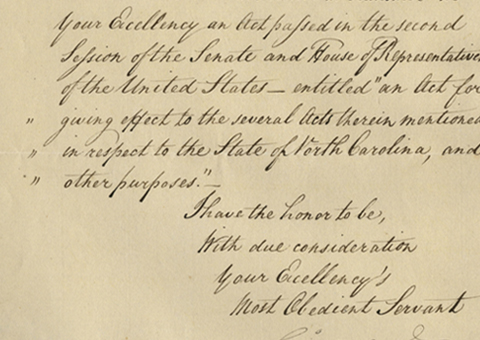Sold – Five Extraordinary Journals of a Union Soldier That Formed the Basis for a Published Book

View from the front lines of the Civil War: "The rebel legions came charging down through those dark woods, yelling like very demons".
Van R. Willard was one of the boys of ’61, enlisting in the Civil War in April 1861. During the war, he wrote 5 journals, covering the time from his enlistment until July 1864, when he was mustered out.
His journals dramatize the lives and experiences of those who participated in the...
Van R. Willard was one of the boys of ’61, enlisting in the Civil War in April 1861. During the war, he wrote 5 journals, covering the time from his enlistment until July 1864, when he was mustered out.
His journals dramatize the lives and experiences of those who participated in the fiery trial of the war. They are of compelling importance as a historic and dramatic narrative and place the reader in the very eye of the entire Civil War hurricane in a way seldom seen. Willard served in the Shenandoah Valley campaign against Stonewall Jackson in 1862 and was wounded in the cornfield at Antietam.
He returned to the front in early 1863 and was present at Chancellorsville, Gettysburg and on Sherman’s Georgia campaign. He was again wounded at Dallas, Georgia, in May 1864, just prior to returning to civilian life. Willard himself says that he was involved in seventeen battles.
Here are a few highlights of these historic journals, which were published by Stackpole Books as With the 3rd Wisconsin Badgers:
The Battle of Antietam, September 1862 – “We…poured volley after volley into the Rebel collumns as they came sweeping up to within half musket range, fireing and cheering as they came. Then…came the order to “fix bayonets.” It was done, and in a moment the sharp ringing of steel died away- then Charge! rang out along the line, and down into the corn swept that long dark line with lowered bayonets that flashed and gleamed angrily.” Jackson’s Corps charges at Chancellorsville, May 1863 – “The rebel legions came charging down through those dark woods, yelling like very demons; not a round, full, manly cheer, but shrill and sharp, prolonged and continuous, riseing and falling, growing faint sometimes and dying away, and then bursting out again louder and more shrill than before…”
The scene at the Chancellorsville mansion, May 1863 – “Generals were there, and their orderlies and aides were galloping here and there over the field. General Hooker was there, fearlessly riding in the very thickest of the storm, his eyes flashing and his cheeks glowing with animation. General Slocum was there, sitting on his horse, coolly and quietly watching the progress of the battle…” A cavalry charge at Brandy Station, June 1863 – “It was a fine sight to see the cavalry in long lines as they swept across the open field, mingling in a deadly hand to hand conflict, the bugles ringing over the din of strife, the clashing of swords flashing brightly as they rose and fell, the waveing of banners, the cracking of revolvers and carbines, the rearing of steeds, the rebel yells and Federal cheers, the wild swoop of charging squadrons. Indeed, a cavalry fight is one of the most stirring scenes.”
Pickett’s Charge, Gettysburg, July 3, 1863 – “A hundred and fifty cannon blazed and burned on the crest of the hills, sweeping them down by hundreds. But they came on, their ranks being closed up as fast as they are broken, fresh men taking the places of the fallen.” Burying the Rebel dead at Gettysburg, July 4, 1863 – “Early in the morning of the 4th…the woods were thickly strewn with the wounded and dead, while vast quantities of armes were scattered around evry where. After we returned from our reconnoitering expidition, we began the humane work of burying the rebel dead. A deep wide trench was dug in the meadow at the foot of the hill.”
The Battle of Dallas, Ga., Spring 1864 – “We found ourselves confronted by a large force of the enemy posted behind strong works of logs and earth, and they poured into us the most withering fire of musketry and artillery that we had ever experienced…The air seemed to vibrate as if agitated by a hundred whirlwinds and the earth seemed to tremble beneath our feet.” Civil War authors have praised Willard’s narrative. William C. Davis rates it “splendid”and says “This is the sort of book that lets you peer into the mind of the Civil War soldier.” Brian Pohanka lauds it as “moving” and “notable…for its immediacy,” calling the author “perceptive…sensitive, philosophical and a keen observer.”

Frame, Display, Preserve
Each frame is custom constructed, using only proper museum archival materials. This includes:The finest frames, tailored to match the document you have chosen. These can period style, antiqued, gilded, wood, etc. Fabric mats, including silk and satin, as well as museum mat board with hand painted bevels. Attachment of the document to the matting to ensure its protection. This "hinging" is done according to archival standards. Protective "glass," or Tru Vue Optium Acrylic glazing, which is shatter resistant, 99% UV protective, and anti-reflective. You benefit from our decades of experience in designing and creating beautiful, compelling, and protective framed historical documents.
Learn more about our Framing Services







































































































